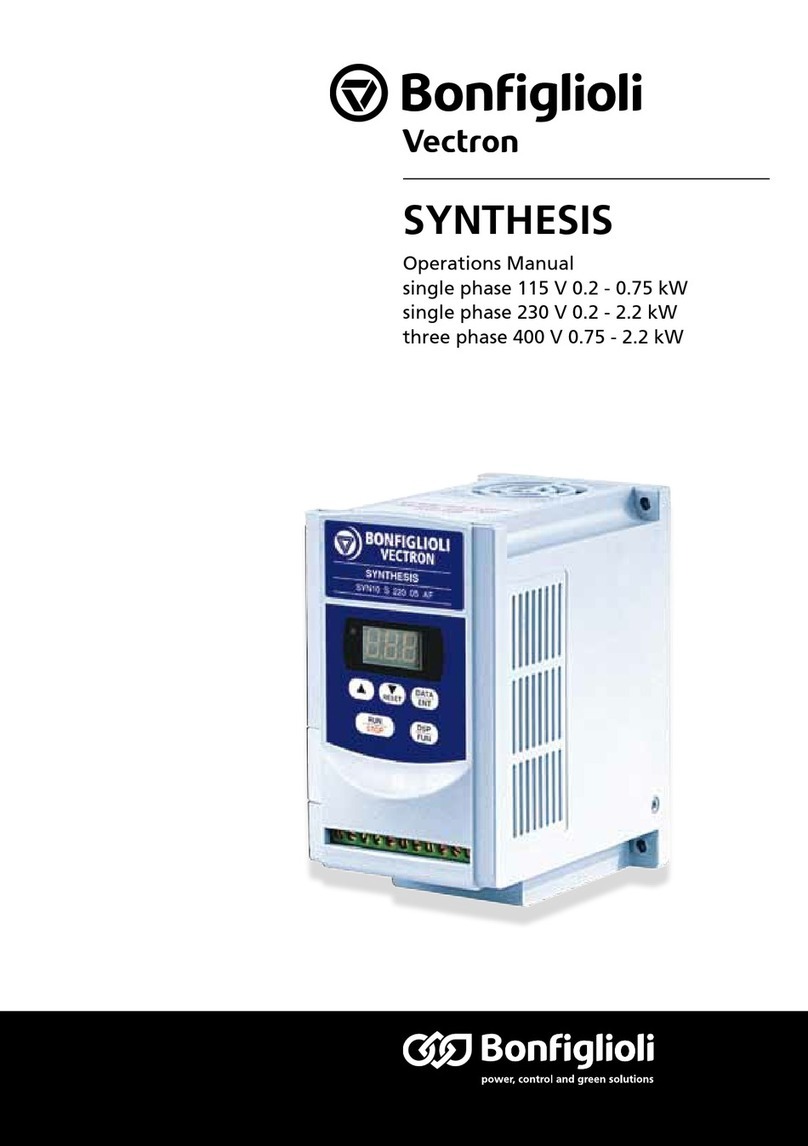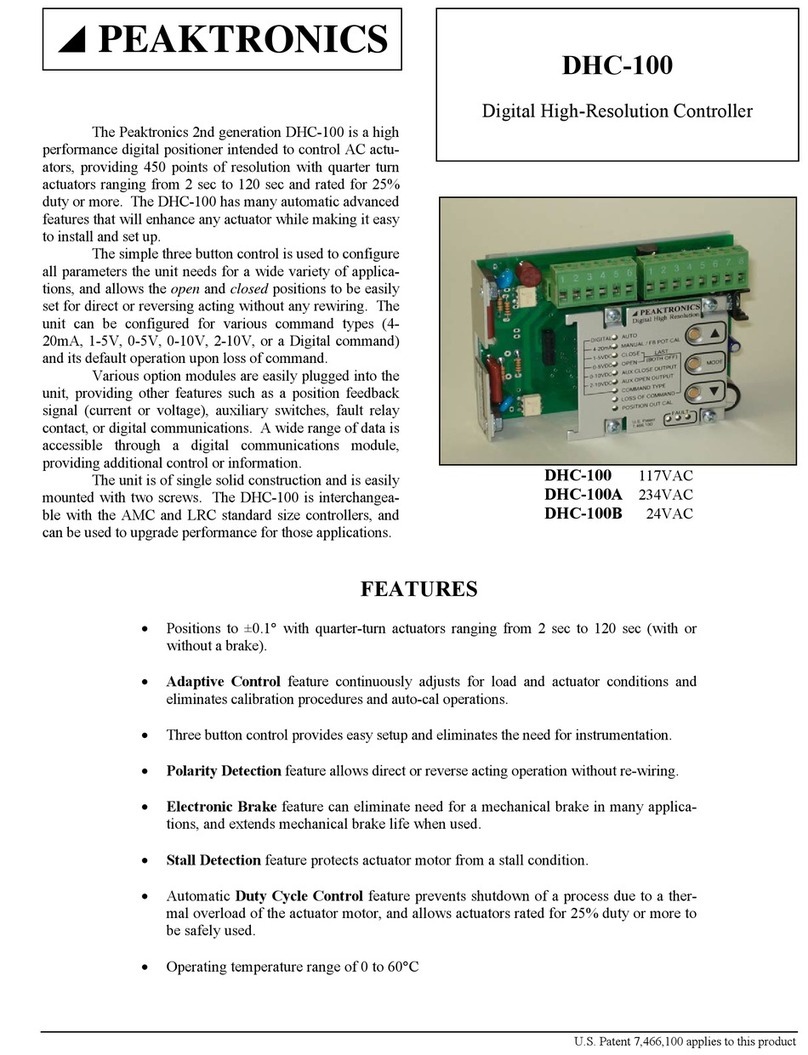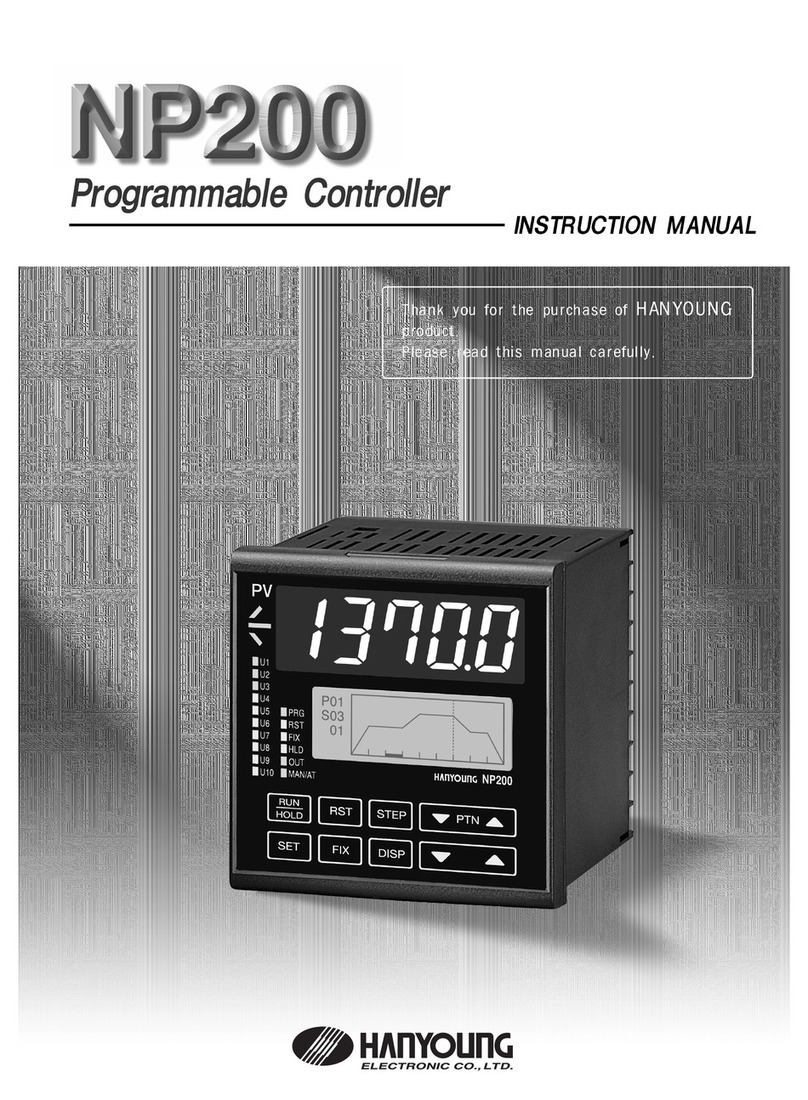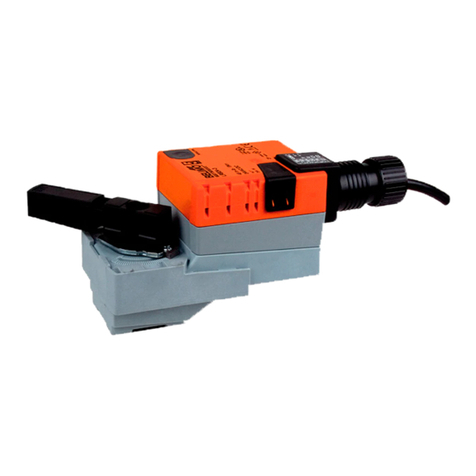BONFIGLIOLI DGM User manual

User instructions. DGM
speed regulator

User instructions. DGM speed regulator 2
Bonfiglioli Riduttori S.p.A.
Via Giovanni XXIII, 7/A
40012 Lippo di Calderara di Reno
Bologna, Italy
Tel. +39 051 647 3111
Fax +39 051 647 3126
bonfiglioli@bonfiglioli.com
www.bonfiglioli.com
Exclusion of liability
All the names used, commercial names, product names or other names may be legally
protected even if not specially indicated (e.g. such as logos). BONFIGLIOLI does not assume
any liability or guarantee for their free use.
Maximum care was taken when preparing the images and texts. However, it is not possible to
exclude the presence of errors. Editing was performed without guarantee.
General equal treatment
BONFIGLIOLI is aware of the linguistic importance regarding the equal rights of men and
women and takes this constantly into account. However, to make reading easier, we were
obliged to omit the common formulations of distinction.
2018 BONFIGLIOLI RIDUTTORI S.p.A.
All rights are reserved to BONFIGLIOLI, including making photocopies and storage on
electronic media. Use for industrial purposes or the reproduction of the texts contained in this
product, the shown models, drawings or photos is not permitted. It is prohibited to copy or store
this manual, either in its entirety or partially, or to transmit, reproduce or translate it in any form,
using any support without prior written approval.

General information
User instructions. DGM speed regulator 3
Table of contents
1. General information .........................................................................6
1.1 Information about the documentation ..........................................................................6
1.1.1 Documentation storage...............................................................................................6
1.2 Warnings related to these instructions.........................................................................7
1.2.1 Warnings.....................................................................................................................7
1.2.2 Warning symbols used................................................................................................8
1.2.3 Keywords....................................................................................................................8
1.2.4 Information notes ........................................................................................................9
1.3 Symbols used in these instructions ...........................................................................10
1.4 Marks on the speed regulator....................................................................................11
1.5 Qualified personnel...................................................................................................12
1.6 Use compliant with the intended use.........................................................................12
1.7 Responsibility............................................................................................................13
1.8 CE MARK .................................................................................................................13
1.9 Safety instructions.....................................................................................................14
1.9.1 General aspects........................................................................................................14
1.9.2 Transport and storage...............................................................................................16
1.9.3 Storing the devices for a long period of time..............................................................16
1.9.4 Instructions for start-up..............................................................................................17
1.9.5 Information regarding operation ................................................................................18
1.9.6 Maintenance and inspection......................................................................................20
1.9.7 Repairs .....................................................................................................................21
2. Speed regulator overview..............................................................22
2.1 Model description......................................................................................................22
2.1.1 Selection of the model...............................................................................................22
2.1.2 Division of the sizes ..................................................................................................23
2.2 MMI*/connection cable PIN assignment....................................................................24
2.3 Description of the DGM speed regulator....................................................................25
3. Installation.......................................................................................26
3.1 Safety instructions for installation..............................................................................26
3.2 Recommended fuses/automatic circuit breaker.........................................................26
3.3 Installation requirements...........................................................................................27
3.3.1 Suitable ambient conditions.......................................................................................27
3.3.2 Suitable place of installation for the speed regulator integrated on the motor ............28
3.3.3 Fundamental connection variants..............................................................................29
3.3.4 Protection against short circuits and ground leakage.................................................32
3.3.5 Wiring instructions.....................................................................................................33
3.3.6 Exclusion of electromagnetic disturbances................................................................36
3.4 Installation of the speed regulator integrated on a generic motor...............................36
3.4.1 Mechanical installation of sizes A - C ........................................................................36
3.4.2 Mechanical installation of size D ...............................................................................41
3.4.3 Power connection for sizes A - C...............................................................................47
3.4.4 Power connection size D...........................................................................................50
3.4.5 Brake chopper connections.......................................................................................53
3.4.6 Control connections X5, X6, X7.................................................................................53
3.4.7 Connection diagram..................................................................................................60
3.5 Wall-mounted installation of the speed regulator.......................................................61

General information
User instructions. DGM speed regulator 4
3.5.1 Location suitable for the wall-mounted installation.....................................................61
3.5.2 Mechanical installation sizes A - C............................................................................62
3.5.3 Mechanical installation size D ...................................................................................67
3.5.4 Power connection......................................................................................................75
3.5.5 Brake chopper connections.......................................................................................76
3.5.6 Control connections X5, X6, X7.................................................................................76
3.6 Deinstalling and installing the DGM fan size “D” ........................................................76
3.6.1 Deinstalling the fan....................................................................................................77
3.6.2 Installing the fan........................................................................................................79
4. Start-up............................................................................................82
4.1 Safety instructions for start-up...................................................................................82
4.2 Communication.........................................................................................................83
4.3 Block diagram..............................................................Error! Bookmark not defined.
4.4 Steps for start-up.......................................................................................................86
4.4.1 Start-up via the PC:...................................................................................................86
4.4.2 Start-up via the PC, combined with the optional MMI.................................................87
5. Parameters......................................................................................89
5.1 Safety warnings for parameter use............................................................................89
5.2 General aspects concerning the parameters.............................................................90
5.2.1 Explanation of the operating modes..........................................................................90
5.2.2 Structure of the parameter tables..............................................................................94
5.3 Applicable parameters...............................................................................................95
5.3.1 Basic parameters......................................................................................................95
5.3.2 Fixed frequency ......................................................................................................104
5.3.3 Motor potentiometer function...................................................................................105
5.3.4 PID process regulator .............................................................................................107
5.3.5 Analog inputs..........................................................................................................112
5.3.6 Digital inputs ...........................................................................................................115
5.3.7 Analogue output......................................................................................................116
5.3.8 Digital outputs.........................................................................................................117
5.3.9 Relay ......................................................................................................................119
5.3.10 Virtual output...........................................................................................................122
5.3.11 External error..........................................................................................................125
5.3.12 Motor current limit ...................................................................................................125
5.3.13 Block detection........................................................................................................127
5.3.14 Fieldbus..................................................................................................................130
5.4 Power parameters...................................................................................................132
5.4.1 Motor data...............................................................................................................132
5.4.2 Control I2T...............................................................................................................136
5.4.3 Switching frequency................................................................................................137
5.4.4 Regulator data ........................................................................................................137
5.4.5 Quadratic characteristic curve.................................................................................140
5.4.6 Brake chopper.........................................................................................................141
5.4.7 Protection functions.................................................................................................141
6. Troubleshooting ...........................................................................142
6.1 Presentation of the LED flashing codes for error detection......................................143
6.2 List of errors and system errors...............................................................................144

General information
User instructions. DGM speed regulator 5
7. Deinstallation and disposal.........................................................149
7.1 Deinstalling the speed regulator..............................................................................149
7.2 Instructions for proper disposal ...............................................................................149
8. Technical data...............................................................................150
8.1 General data...........................................................................................................150
8.1.1 General technical data for 400 V devices................................................................150
8.1.2 General technical data for 230 V devices................................................................151
8.1.3 Interface specification .............................................................................................152
8.2 Derating of the output power...................................................................................153
8.2.1 Power derating based on the ambient temperature.................................................153
8.2.2 Power derating based on the installation altitude.....................................................155
8.2.3 Power derating based on the switching frequency...................................................156
9. Accessories ..................................................................................157
9.1 Adapter plates.........................................................................................................157
9.1.1 Adapter plates for a generic motor ..........................................................................157
9.1.2 Bonfiglioli motor adapter plates...............................................................................160
9.1.3 Wall adapter plates (standard) ................................................................................161
9.2 Foil keypad .............................................................................................................164
9.3 Hand-held MMI control device incl. 3 m of RJ9 connection cable to the M12 connector
...............................................................................................................................168
9.4 PC USB communication cable on the M12/RS485 connector (integrated converter)168
10. Authorizations, standards and directives..................................169
10.1 EMC limit value classes ..........................................................................................169
10.2 Classification based on IEC/EN 61800-3.................................................................170
10.3 Standards and directives.........................................................................................170
11. Quick start-up ...............................................................................171
11.1 Quick start-up of the asynchronous motor...............................................................171

General information
User instructions. DGM speed regulator 6
1. General information
Thank you for choosing a DGM speed regulator from Bonfiglioli Riduttori S.p.A. Our range of
DGM speed regulators is designed for use with the motors in the BONFIGLIOLI range.
1.1 Information about the documentation
The following information provides a guide for the entire documentation.
Read these instructions carefully and completely. They contain important information regarding
the use of the DGM.
We do not accept any liability for damage caused by the failure to follow these instructions.
This manual is an integral part of the product and applies only to the DGM manufactured by
Bonfiglioli Riduttori S.p.A.
Deliver this manual to the plant manager to ensure that the instructions are available if needed.
1.1.1 Documentation storage
Carefully store these user instructions as well as the remaining documentation so they are
available if needed.

General information
User instructions. DGM speed regulator 7
1.2 Warnings related to these instructions
1.2.1 Warnings
The warnings call attention to physical and lethal hazards. Serious damage can be caused to
personnel, which can also be lethal.
Each warning is marked with the following elements:
HAZARD
Risk of fatal injury due to electric shock!
Fatal or serious injuries!
Disconnect the electrical voltage from the speed regulator and secure it to prevent it from
being reconnected.
Fig. 1: Structure of the warnings
1
Warning symbol
2
Keyword
3
Type of hazard and relative origin
4
Possible consequence if not observed
5
Solution
1
2
5
3
4

General information
User instructions. DGM speed regulator 8
1.2.2 Warning symbols used
Hazard
Risk of electric shock and electric discharge
Risk due to electromagnetic fields
1.2.3 Keywords
The keywords indicate the type of hazard.
HAZARD
This indicates an imminent threat with a high degree of risk that, if not avoided, results in death
or serious injuries.
WARNING
This indicates a threat with a medium degree of risk that, if not avoided, results in death or
serious injuries.
CAUTION
This indicates a threat with a low degree of risk that, if not avoided, could cause moderate
injuries or material damage.

General information
User instructions. DGM speed regulator 9
1.2.4 Information notes
The information notes contain important instructions for installation and the optimal operation of
the speed regulator. They must be complied with. The information notes call attention to the fact
that, if not observed, material or economic damage is possible.
IMPORTANT INFORMATION
The assembly, use, maintenance and installation of the speed regulator must be
carried out only by specialized, properly trained and qualified personnel.
Fig. 2: Example of an information note
Symbols used in the information notes
Important information
Material damage is possible
Other notes
INFORMATION
Image enlarged

General information
User instructions. DGM speed regulator 10
1.3 Symbols used in these instructions
Symbol
Meaning
1., 1., 3. …
Consecutive steps of user instructions
Implications of the user instructions
✓
Final result of the user instructions
List
Fig. 3: Utilized symbols and icons
Utilized abbreviations
Abbreviation
Explanation
Table
Table
Fig.
Figure
Pos.
Position
Chap.
Chapter

General information
User instructions. DGM speed regulator 11
1.4 Marks on the speed regulator
Fig. 4 Marks on the speed regulator
Plates and marks are applied on the speed regulator. Do not change or remove them.
Symbol
Meaning
Risk of electric shock and electric discharge
Risk of electric shock and electric discharge. After shut-off, wait two minutes
(time for capacitor discharge)
Supplementary ground connection
Read and follow the user instructions

General information
User instructions. DGM speed regulator 12
1.5 Qualified personnel
Qualified personnel, for the purpose of these user instructions, are electricians who have
knowledge and experience concerning the installation, assembly, start-up and use of the speed
regulator and who have been informed of the correlated risks. Furthermore, thanks to their
professional training, they have the necessary knowledge concerning the relevant standards
and provisions.
1.6 Use compliant with the intended use
When carrying out the installation on machines, the speed regulator may not be started up (e.g.
operation in accordance with its intended use) until it has been verified that the machine
complies with the provisions of EC Directive 2006/42/EC (machine directive); observe DIN EN
60204-1; VDE 0113-1.
Start-up (e.e. operation in accordance with its intended use) is only permitted in compliance with
the EMC Directive (2014/30/EU).
The harmonized standards of the series DIN EN 50178; VDE 0160 together with DIN EN
61439-1/DIN EN 61439-2; VDE 0660-600 must be applied for this speed regulator.
This speed regulator may not be used in areas at risk of explosion!
The repairs may only be made by authorized repair centers. Arbitrary, unauthorized
interventions can cause death, physical injuries and material damage. In this case, the warranty
offered by Bonfiglioli is voided.
IMPORTANT INFORMATION
Mechanical loads are not permitted on the housing!
IMPORTANT INFORMATION
The use of speed regulators in non-fixed equipment is considered an
extraordinary ambient condition and is permitted only in compliance with the
locally applicable standards and directives.

General information
User instructions. DGM speed regulator 13
1.7 Responsibility
In principle, electronic equipment is not fault free. The machine/system installer and/or operator
is responsible for the implementation of safety measures for the system in case of an equipment
fault.
DIN EN 60204-1; VDE 0113-1 "Safety of machinery", chapter "Electrical machine equipment”
illustrates the safety requirements for the electrical controls. These are used to guarantee the
safety of persons and machinery, and to maintain the functionality of the machine or the plant,
and therefore must be observed.
The operation of an emergency stop device must not cause the deactivation of the power
supply voltage for the drive system. To exclude dangers, it may be useful to keep individual
drive systems in function or start certain safety procedures.
The implementation of emergency stop measures is assessed considering the risk to the
machine/system, including the electrical equipment, and determined based on DIN EN 13849
“Safety of command system components, relative to machine safety” according to the circuit
category.
1.8 CE MARK
The company Bonfiglioli Riduttori S.p.A. declares herewith that the speed regulators
described in this document satisfy the fundamental requirements and the other relevant
provisions of the directives indicated below.
Directive 2014/30/EU
(electromagnetic compatibility, EMC).
Directive 2014/35/EU
(placing on the market of electric material to be used within some voltage limits - in short:
Low Voltage Directive).
Directive 2011/65/EU
(restriction of the use of certain hazardous substances in electrical and electronic
equipment- in short: RoHS Directive)

General information
User instructions. DGM speed regulator 14
1.9 Safety instructions
The following warnings, precautionary measures and instructions are provided for your own
safety and to avoid damaging the speed regulator or the components connected to it. This
chapter provides a summary of the warnings and instructions that apply in general when
working with speed regulators. They are divided into: General aspects, transport and storage,
deinstallation and disposal.
The specific warnings and instructions that apply to specific activities can be found at the
beginning of the respective chapter and are repeated and integrated in that chapter, in the
critical points.
Read this information carefully as it is intended for your personal safety and also to extend the
service life of the speed regulator and the equipment connected to it.
1.9.1 General aspects
IMPORTANT INFORMATION
Before installation and start-up, read these user instructions and the warning plates
applied on the speed regulator carefully. Make sure that all the warning plates
applied to the speed regulator are legible; if necessary, replace any missing or
damaged plates.
They contain important information regarding the installation and operation of the
speed regulator. Follow in particular the instructions provided in the chapter
“Important information”. Bonfiglioli Riduttori S.p.A. is not responsible for damage
caused by the failure to follow these user instructions.
This user instruction manual is an integral part of the product. It is only applicable to
the Bonfiglioli Riduttori S.p.A. DGM speed regulator.
Keep these user instructions near the speed regulator where it is accessible to all
users.

General information
User instructions. DGM speed regulator 15
IMPORTANT INFORMATION
The speed regulator can be operated safely only if the requested ambient
conditions have been observed, which can be found in the chapter “Suitable
ambient conditions".
HAZARD
Risk of fatal injury due to electric shock!
Fatal or serious injuries!
Disconnect the electrical voltage from the speed regulator and secure it to prevent it from
being reconnected.
HAZARD
Risk of fatal injury due to electric shock!
Fatal or serious injuries!
Connect the device to the ground in compliance with DIN EN 61140; VDE 0140, NEC and
other pertinent standards.
The speed regulator must be ground connected together with the motor, as required.
Otherwise, this can cause fatal or serious injuries.
If spring washers are not used during the installation of the adapter plate in order to create
a correct connection to the protective conductor, a supplementary connection must be
made between the motor and the speed regulator.
HAZARD
Risk of fatal injury due to moving mechanical components!
Fatal or serious injuries!
Disconnect the electrical voltage from the speed regulator and secure it to prevent it from
being reconnected.
WARNING
Risk of fatal injury due to fire or electric shock!
Fatal or serious injuries!
Use the speed regulator in compliance with its intended use.
Do not make changes to the speed regulator.
Only use accessories and spare parts sold or recommended by the manufacturer.
During installation, make sure that there is a sufficient distance from nearby components.
CAUTION

General information
User instructions. DGM speed regulator 16
Risk of burns due to extremely hot surfaces!
Serious burns due to extremely hot surfaces!
Let the speed regulator heat dissipator cool down sufficiently.
Let the nearby components cool down sufficiently.
If necessary, install a protective guard.
1.9.2 Transport and storage
Material damage is possible
Risk of damaging the speed regulator!
Risk of damaging the speed regulator due to improper transport, storage,
installation and assembly!
Transport the speed regulator in a vertical position, in its original packaging.
Store the speed regulator properly.
Have it installed and assembled only by qualified personnel.
1.9.3 Storing the devices for a long period of time
IMPORTANT INFORMATION
For speed regulators that were stored for more than 2 years, prior to installation and/or use
in nominal conditions, the following regeneration process must be carried out:
The speed regulator must be connected to the network voltage (+/- 3%) for 30 minutes,
without the device being loaded. This concerns both the connection to the motor as well
as to other users and connections on the application.
Carry out this procedure once before start-up.
In all cases, observe the general requirements for the storage of speed regulators!

General information
User instructions. DGM speed regulator 17
1.9.4 Instructions for start-up
HAZARD
Risk of fatal injury due to electric shock!
Fatal or serious injuries!
Disconnect the electrical voltage from the speed regulator and secure it to prevent it from
being reconnected.
The following terminals can conduct dangerous voltage, also when the motor is off:
Network power supply terminals X1: L1, L2, L3
Motor connection terminal boards X2: U, V, W
Connection terminal boards X6, X7: Relay contacts 1 and 2
Connection terminal boards PTC T1/T2
IMPORTANT INFORMATION
Only used fixed wired connections to the network.
Connect the speed regulator to the ground in compliance with DIN EN 61140;
VDE 0140-1.
There may be contact current > 3.5 mA in the DGM.
For this reason, apply a protective conductor for supplementary grounding with
the same section of the protective conductor for the original grounding, in
compliance with DIN EN 61800-5-1. It is possible to connect a second
protective conductor for grounding below the network power supply (marked by
the earth symbol) on the external side of the device.
When three-phase current frequency converters are used, it is not permitted to
use a traditional type A FI automatic circuit breakers, also called RCDs
(residual-current-operated protective devices) for protection against direct or
indirect contact! The FI automatic circuit breaker must be an automatic FI that
provides protection against all types of currents (RCD type B) in compliance
with DIN VDE 0160 and EN 50178!

General information
User instructions. DGM speed regulator 18
IMPORTANT INFORMATION
Using different levels of voltage (for ex. +24 V / 230 V), crossing of lines must
always be avoided! Furthermore, the user must also make sure that the current
standards are observed (e.g. double or reinforced insulation, in compliance
with standard DIN EN 61800-5-1)!
The speed regulator contains components that are sensitive to electrostatic
charges. They can be destroyed due to improper handling. Therefore respect
all the precautions against electrostatic charges when working on these
components.
1.9.5 Information regarding operation
HAZARD
Risk of fatal injury due to electric shock!
Fatal or serious injuries!
Disconnect the electrical voltage from the speed regulator and secure it to prevent it from
being reconnected.
HAZARD
Risk of fatal injury due to moving mechanical components!
Fatal or serious injuries!
Disconnect the electrical voltage from the speed regulator and secure it to prevent it from
being reconnected.

General information
User instructions. DGM speed regulator 19
IMPORTANT INFORMATION
Always keep the following information in mind during operation:
The speed regulator operates with high voltage.
When the electrical devices are operating, certain parts of these devices are
always subject to hazardous voltage.
The emergency stop devices compliant with DIN EN 60204-1;
VDE 0113-1:2007-06 must remain functional in all operating modes of the
control unit. Resetting an emergency stop device must not cause an
uncontrolled or indefinite start-up.
To guarantee a safe separation from the network, the network cable must be
disconnected from the speed regulator, in a synchronous manner and for all
poles.
For devices with a single-phase power supply and for those with size D (11 to
22 kW), observe a pause of at least 1-2 minutes between the consecutive
activations of the network, one following the other.
For devices with three-phase power supply, models A - C (from 0.55 to 7.5
kW), observe a pause of at least 3 seconds between consecutive network
activations.
Certain parameter settings can cause the automatic restart of the speed
regulator after the power supply voltage has failed.
Material damage is possible
If the instructions are not observed, the speed regulator can be damaged and be
destroyed at the next start-up!
Always keep the following information in mind during operation:
To suitably protect the motor against overloads, the motor parameters, and in
particular the I2T settings, must be configured correctly.
The speed regulator offers internal protection against motor overloads. In this
respect, see parameters 33.010 and 33.011.
In compliance with the default settings, the function I2T is active (ON).
Protection against motor overload can also be guaranteed by an external PTC.
The speed regulator must not be used as an “emergency stop device” (see DIN
EN 60204-1; VDE 0113-1:2007-06).

General information
User instructions. DGM speed regulator 20
1.9.6 Maintenance and inspection
Maintenance and inspection of the speed regulator may only be carried out by suitably trained
electricians. Unless otherwise indicated specifically in these user instructions, the changes to
the hardware and the software may only be performed by BONFIGLIOLI experts or by persons
authorized by BONFIGLIOLI.
Cleaning the speed regulator
The speed regulator does not require maintenance when used correctly. If the air is dusty, the
cooling fins of the motor and the speed regulator must be cleaned regularly. In the case of
devices with integrated fans (standard for size D), it is recommended to use compressed air for
cleaning.
Measurement of the control board insulation resistance
It is not permitted to check the insulation on the input terminals of the control board.
Measurement of the power module insulation resistance.
During on-line testing, the DGM power module is tested with 2.02 kV.
If during the system check it becomes necessary to measure the insulation resistance, do so
under the following conditions:
The insulation can only be checked for the power module.
To avoid excessively high voltages, disconnect all the DGM connection cables before
performing the check.
A 500 Vdc device for checking the insulation must be used.
Fig. 5: Power module insulation check
Sample
Groun
d
Isolation control app.
500Vdc
Table of contents
Other BONFIGLIOLI Controllers manuals
Popular Controllers manuals by other brands

Azbil
Azbil Infilex BC WY5610 Specifications & instructions
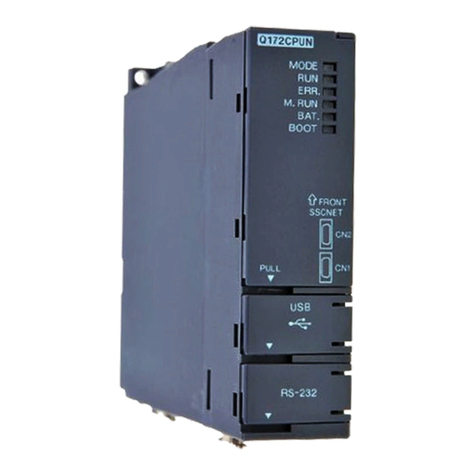
Mitsubishi Electric
Mitsubishi Electric Q173CPU Programming manual
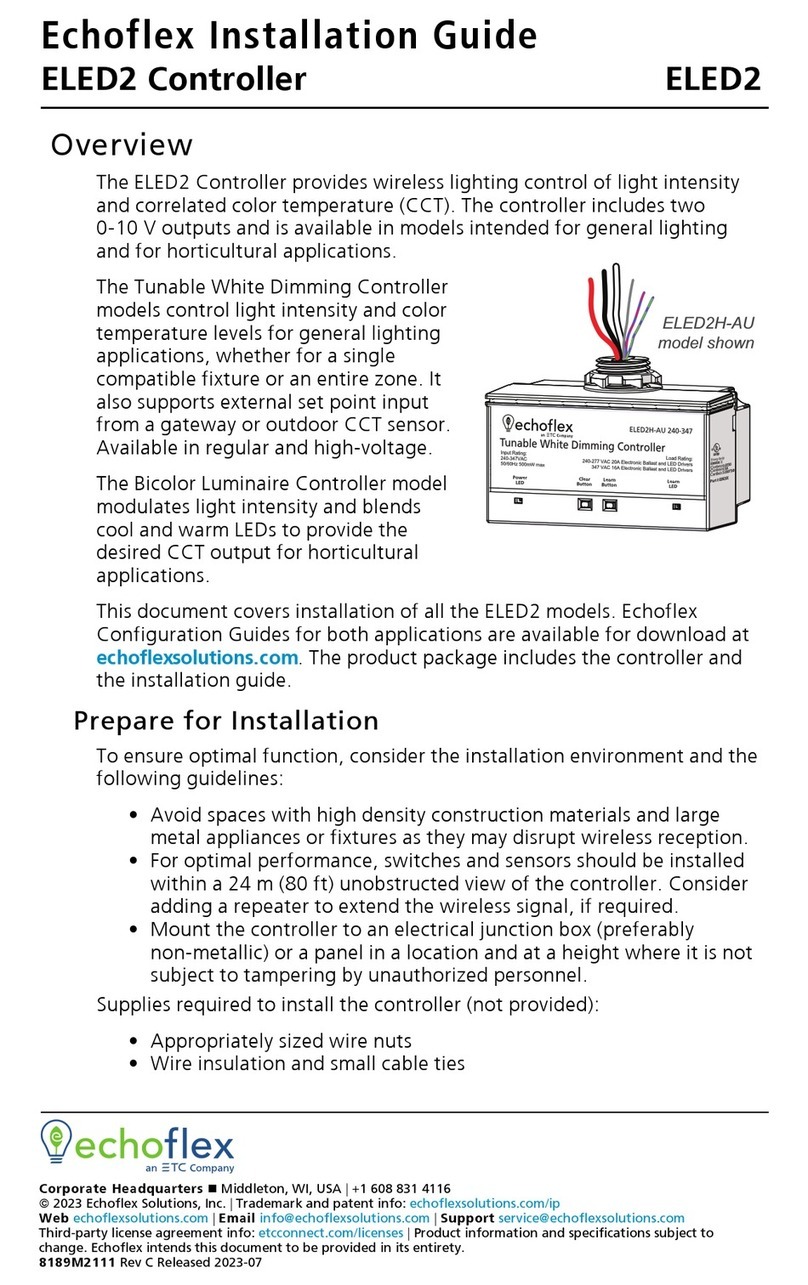
ETC
ETC Echoflex ELED2 installation guide
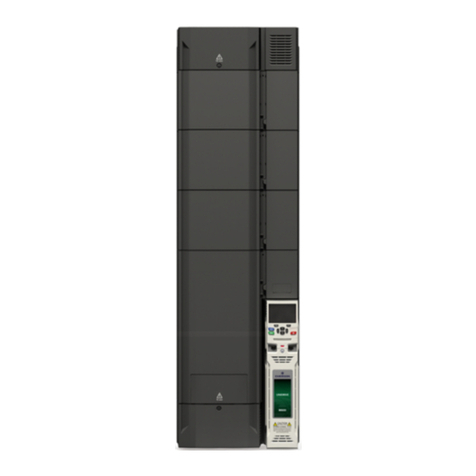
Emerson
Emerson unidrive m201 installation guide
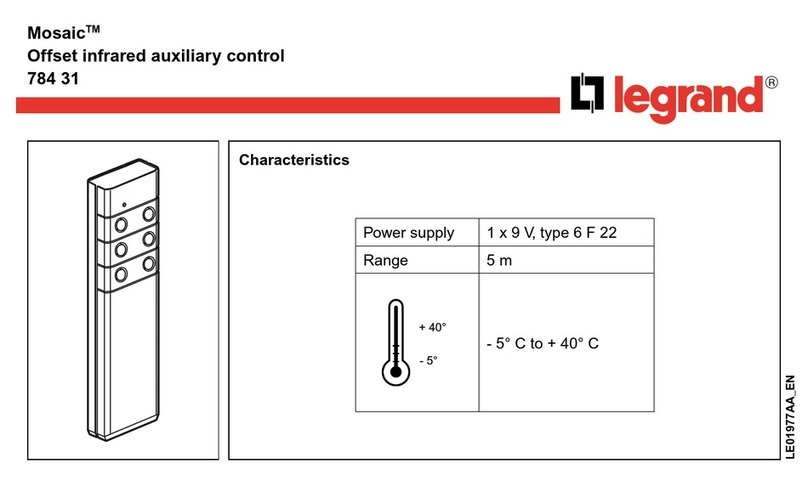
LEGRAND
LEGRAND Mosaic manual
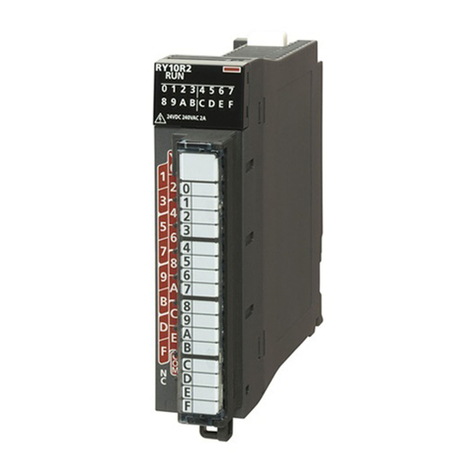
Mitsubishi Electric
Mitsubishi Electric MELSEC iQ-R Series Programming manual
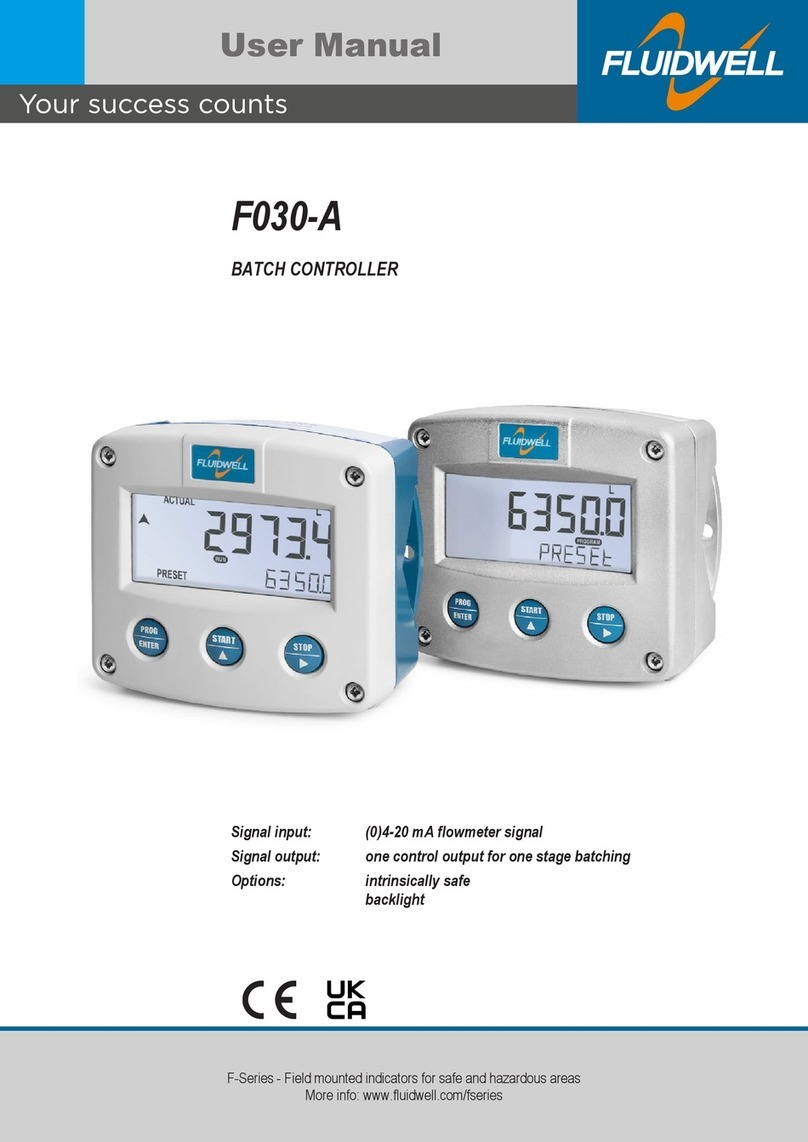
Fluidwell
Fluidwell F030-A user manual
Freescale Semiconductor
Freescale Semiconductor MMCCMB2103 user manual
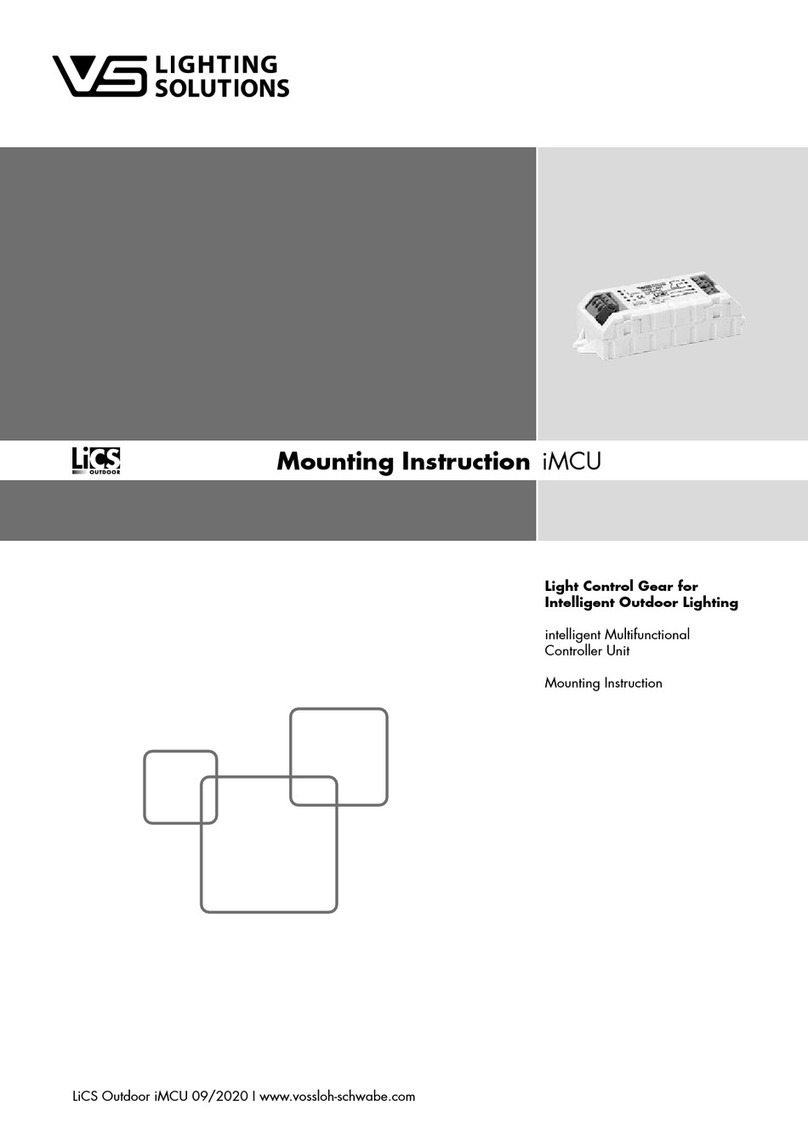
VS LIGHTING SOLUTIONS
VS LIGHTING SOLUTIONS iMCU Mounting instruction
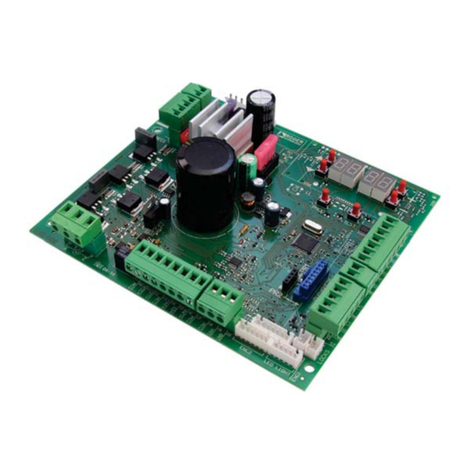
Roger Technology
Roger Technology AG CTRL Instruction and warnings for the installer
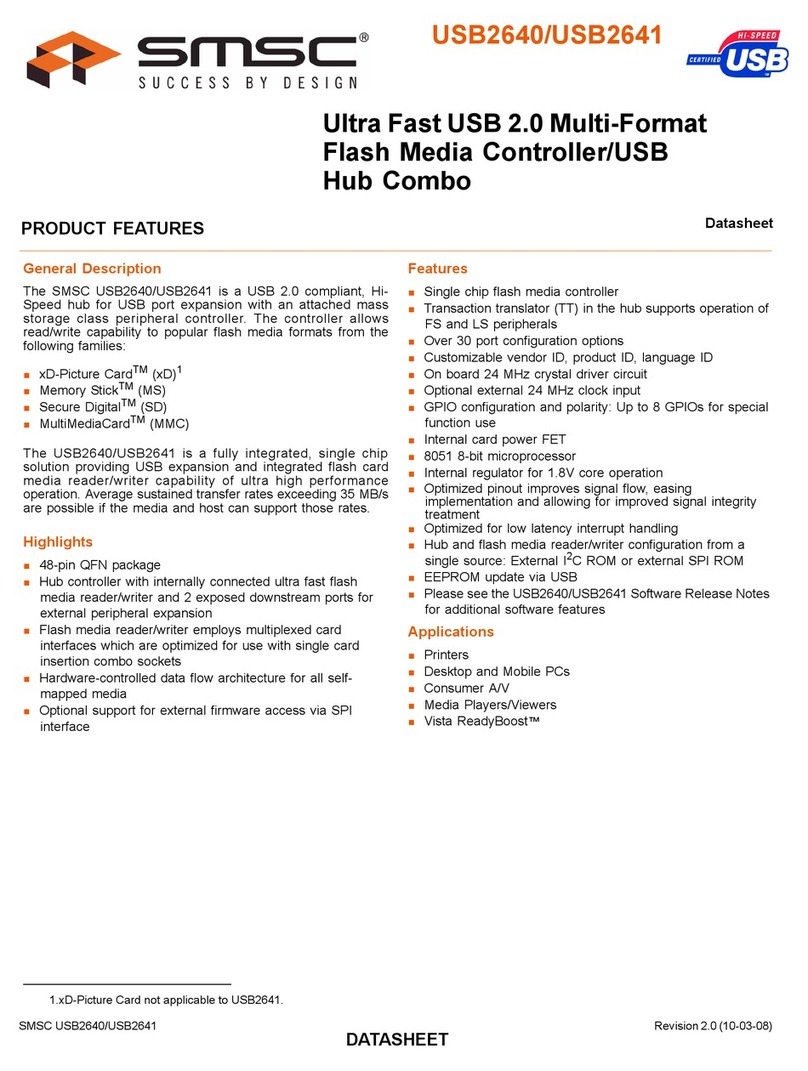
SMSC
SMSC USB2640i datasheet
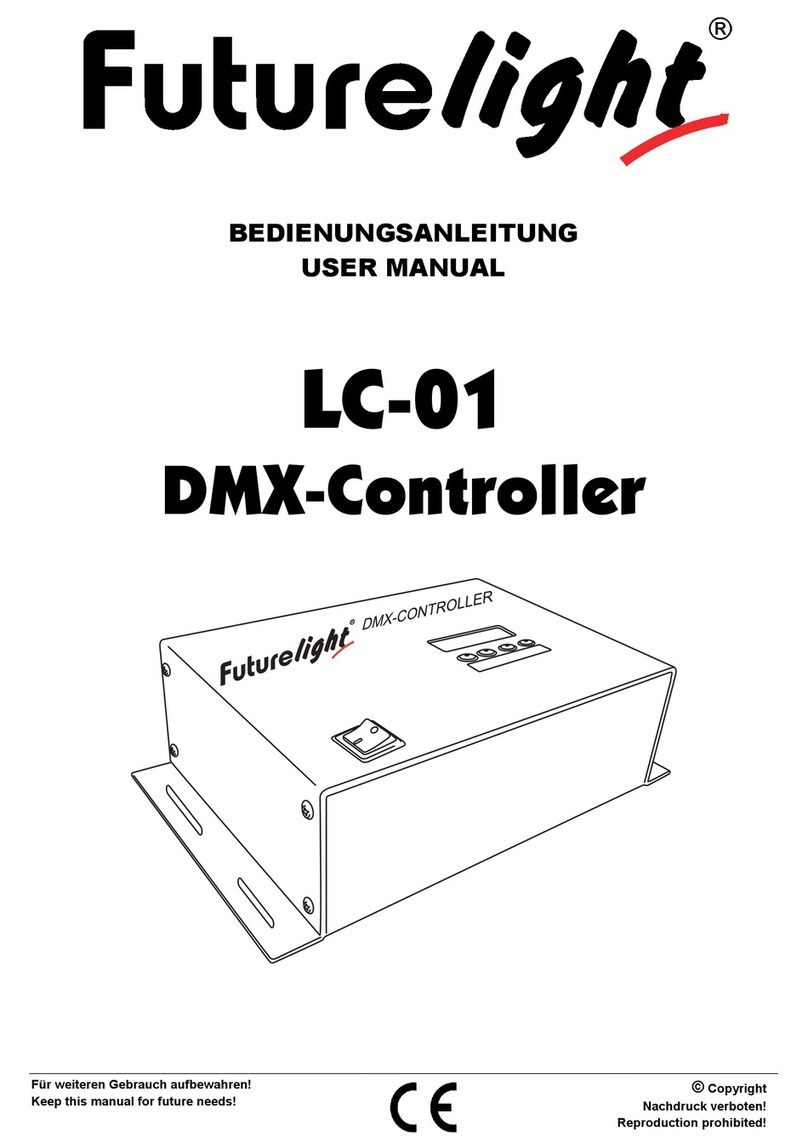
Future light
Future light LC-01 user manual
